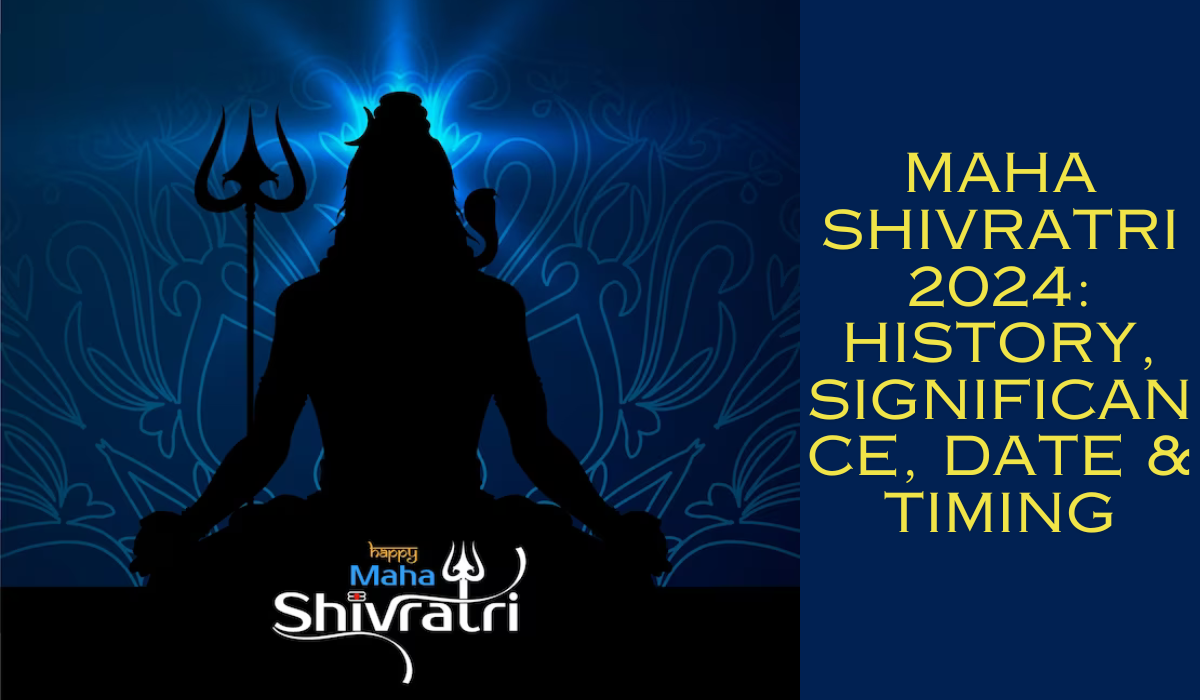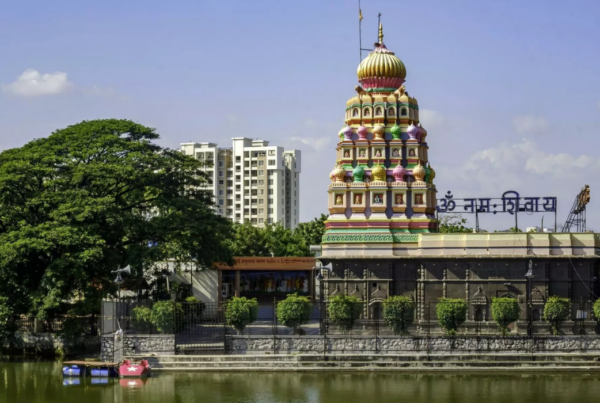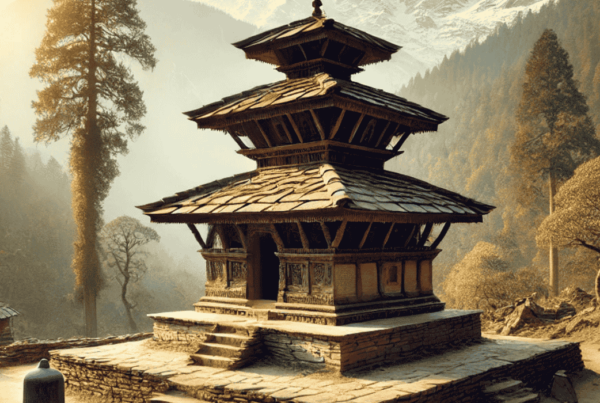Maha Shivratri 2024, a revered Hindu festival celebrated with great fervor, holds a significant place in the hearts of millions. This auspicious occasion, marked by devotion and joy, honors Lord Shiva, the supreme deity in the Hindu pantheon.
Observed on March 8th this year, Maha Shivratri 2024 is a time when devotees embark on a spiritual journey through fasting, prayer, and vigilance. It’s not merely a ritual but a profound expression of faith and reverence.
The history of Maha Shivratri intertwines with ancient legends and scriptures, reflecting the triumph of good over evil and the divine union of Lord Shiva and Goddess Parvati. This celebration transcends borders, uniting people in joyous festivities that include folk dances, melodious songs, and soul-stirring chants.
As devotees offer prayers and seek blessings for happiness, hope, and prosperity, Maha Shivratri becomes a beacon of spiritual renewal and inner transformation. It serves as a reminder of the enduring power of faith and the boundless grace of the divine.
On this sacred day, let’s join hands in reverence, spreading love and goodwill. May the blessings of Lord Shiva enrich our lives with peace, prosperity, and harmony.
Sending heartfelt blessings to you and your dear ones on this auspicious occasion of Maha Shivratri!
Explore the origins and significance of Maha Shivratri, delving into its historical background and cultural importance:
Maha Shivratri is steeped in various beliefs, each adding depth to its significance. One of the prominent legends recounts the divine union of Lord Shiva and Goddess Parvati, celebrated annually on this auspicious day. Their marriage symbolizes the harmonious balance between masculine and feminine energies, fostering cosmic unity and spiritual growth.
Another revered belief revolves around Lord Shiva’s act of consuming the poison churned from the ocean during the Samudra Manthan (churning of the ocean). This selfless deed, undertaken to safeguard the world from darkness and despair, highlights Lord Shiva’s compassion and benevolence.
Maha Shivratri thus serves as a reminder of divine love, sacrifice, and protection. It inspires devotees to emulate Lord Shiva’s virtues of courage, purity, and devotion, fostering a deeper connection with the divine.
As we commemorate Maha Shivratri, let us reflect on these profound narratives, drawing inspiration to lead lives filled with righteousness and compassion.
May the blessings of Lord Shiva and Goddess Parvati illuminate our path and bring peace and prosperity to all. Wishing you a joyous Maha Shivratri!
Importance And Observances:
During Mahashivratri, devotees observe a fast, abstaining from food and water for a specific duration, believed to be beneficial for both body and mind. This act of self-discipline is not only a religious practice but also promotes physical and spiritual well-being.
Many widely believe that fasting and offering prayers to Lord Shiva on this sacred day evoke his blessings and happiness.
Devotees express their reverence to Lord Shiva by presenting various offerings during the pooja, including milk, honey, fruits, and bel leaves. These offerings symbolize purity, devotion, and gratitude towards the divine.
The day begins with devotees taking a purifying bath in the holy waters of the river Ganges, followed by a visit to the temple to seek blessings. Throughout the day, they maintain the fast, dedicating themselves to prayer and meditation in honor of Lord Shiva.
Believers consider chanting the sacred mantra “Om Namah Shivaya” to invoke the divine presence of Lord Shiva and fulfill wishes and desires. This mantra resonates with spiritual vibrations, offering solace and divine intervention to devotees in their journey of life.
As Mahashivratri unfolds, let us immerse ourselves in devotion and contemplation, seeking the grace and blessings of Lord Shiva for prosperity, happiness, and spiritual fulfillment.
May the divine blessings of Lord Shiva enrich our lives with peace, wisdom, and harmony. Wishing you a blessed Mahashivratri!
Rituals And Procedures For Fasting:
On the day preceding Shivaratri Vratam, typically on Trayodashi, advisors recommend devotees to consume only one meal. On the day of Shivaratri, following the morning rituals, devotees undertake the Sankalp (संकल्प) ceremony, pledging to observe a full-day fast and to break it the following day. This Sankalp signifies a commitment to self-determination throughout the fasting period, seeking the blessings of Lord Shiva for a successful completion.
Devotees observe Hindu fasts with strict adherence, seeking divine blessings before commencing them to ensure successful completion. On Shivaratri day, devotees take a second bath in the evening before performing Shiva Puja or visiting temples. Devotees traditionally conduct Shiva Puja during the night and break their fast the next day after taking another bath.
The recommendation is to break the fast between sunrise and before the end of Chaturdashi Tithi to derive maximum benefits from the Vrat. While some hold a contradictory opinion suggesting breaking the fast only after Chaturdashi Tithi ends, it is commonly believed that both Shiva Puja and Parana (पारण) – the breaking of the fast – should occur within Chaturdashi Tithi.
During the night, one can conduct Shivaratri puja once or four times, dividing the entire duration into four Prahar (प्रहर) to perform Shiva Puja four times.Drikpanchang.com provides the durations for all four Prahar, aiding staunch Shiva devotees who perform Shiva Pujan multiple times during the night. Additionally, it lists the Nishita time, marking when Lord Shiva appeared on Earth in the form of Linga, along with the time window for breaking the fast on the following day.
Maha Shivratri 2024 Date and Time:
- Maha Shivaratri on Friday, March 8, 2024
- Nishita Kaal Puja Time – 12:08 AM to 12:57 AM, Mar 09
- Ratri First Prahar Puja Time – 06:25 PM to 09:29 PM
- Ratri Second Prahar Puja Time – 09:29 PM to 12:33 AM, Mar 09
- Third Prahar Puja on Maha Shivratri is from 12:33 AM to 03:36 AM on March 9th.
- Ratri Fourth Prahar Puja Time – 03:36 AM to 06:40 AM, Mar 09
- Chaturdashi Tithi Begins – 09:57 PM on Mar 08, 2024
- Chaturdashi Tithi Ends – 06:17 PM on Mar 09, 2024
Frequently Asked Questions (FAQs):
What is the significance of Maha Shivratri?
Maha Shivratri holds deep cultural and religious significance in Hinduism. It commemorates the marriage of Lord Shiva and Goddess Parvati and symbolizes the triumph of good over evil.
Why do people fast on Maha Shivratri?
Believers consider fasting on Maha Shivratri to purify the body and mind, express devotion to Lord Shiva, and seek his blessings for happiness, prosperity, and spiritual growth.
What are the traditional rituals observed on Maha Shivratri?
Traditional rituals include bathing in sacred rivers, visiting temples, offering prayers, chanting mantras, and performing Puja ceremonies dedicated to Lord Shiva.
What are the common offerings made to Lord Shiva during Maha Shivratri?
Common offerings include milk, honey, fruits, bel leaves, and water. These offerings symbolize devotion, purity, and gratitude towards Lord Shiva.
How is fasting observed during Maha Shivratri?
Devotees typically observe a full-day fast, refraining from consuming food and water. Fasting starts after one meal before Maha Shivratri and ends at sunrise or the completion of Chaturdashi Tithi.
What is the significance of performing Puja during different Prahar timings on Maha Shivratri night?
Believers consider performing Puja during different Prahar timings to enhance spiritual merit and invoke divine blessings. Devotees can choose to perform Puja once or multiple times during the night.
When is Maha Shivratri celebrated in 2024?
Maha Shivratri falls on March 8, 2024, with specific Puja timings provided for devotees to observe the rituals.
How can one break the fast after observing Maha Shivratri?
Devotees may end their fast at sunrise or the end of Chaturdashi Tithi, seeking blessings for wishes from Lord Shiva.








